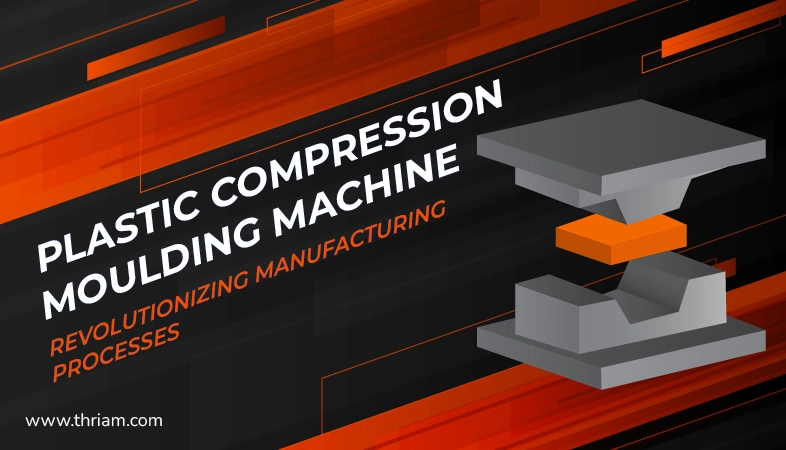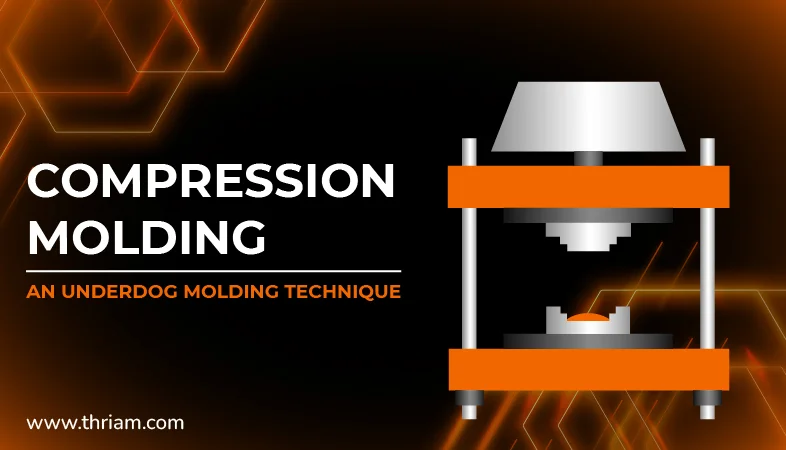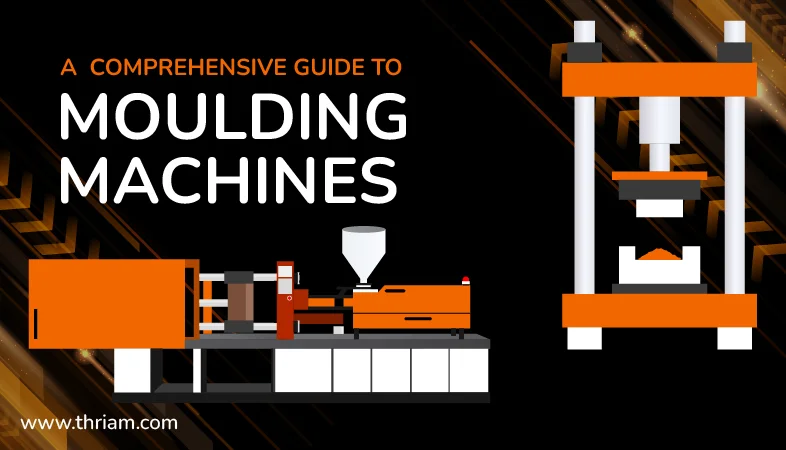Unveiling the complexities of compression molding: Conquering common challenges
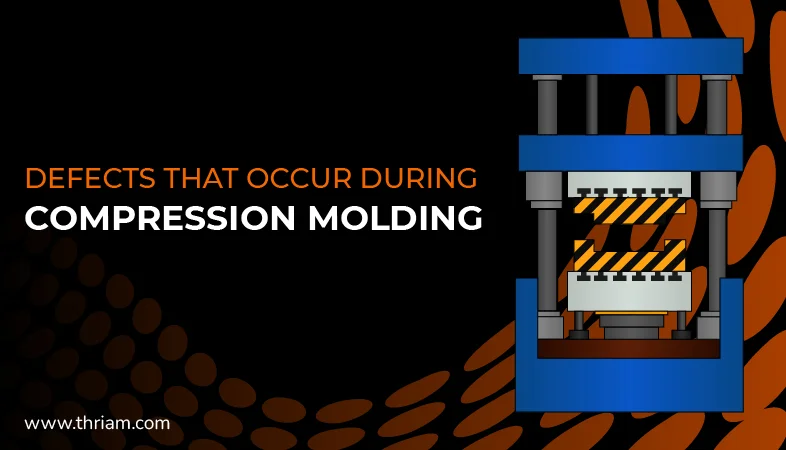
Compression molding is a widely used manufacturing process in various industries to produce high-quality and complex products. However, like any manufacturing process, compression molding also faces several challenges that can impact the final product's quality and integrity. Identifying and addressing these common challenges is crucial to ensure a successful compression molding process. In this blog, we will explore some of the common issues encountered during compression molding and discuss effective strategies to overcome them.
I. Introduction
Compression molding is a manufacturing technique that involves the application of heat and pressure to shape and mold materials. It is commonly used for thermosetting plastics, composites, and rubber, among other materials. The process involves placing the material into a heated mold cavity, followed by applying high pressure to compress and shape the material. While compression molding has its advantages, several challenges can arise during the process.
II. Common challenges in compression molding
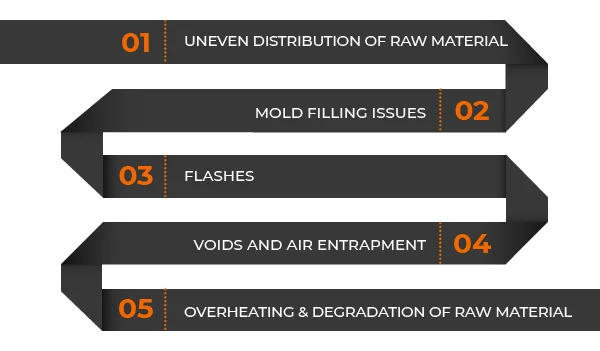
A. Uneven distribution of raw material
One of the primary challenges in compression molding is achieving an even distribution of raw material within the mold cavity. Uneven resin distribution can lead to inconsistent product quality, such as variations in material strength or appearance. To address this challenge, it is vital to implement techniques to improve raw material distribution. These techniques may include optimizing mold design, employing effective venting to facilitate raw material flow, and proper selection of material.
B. Mold filling issues
Mold filling issues can occur when the resin does not adequately flow into the mold cavity, resulting in incomplete filling and voids in the final product. This can compromise the product's strength and durability. To overcome mold filling issues, it is crucial to identify and address the causes. Proper optimization of process parameters, including temperature, pressure, and filling speed, can help improve mold filling during compression molding. Additionally, using mold flow analysis software can aid in identifying potential filling issues and optimizing the mold design accordingly.
C. Flashes
Flashes are an unwanted excess material that escapes from the mold cavity during compression molding. It can lead to aesthetic defects, dimensional inaccuracies, and even affect the functionality of the final product. To prevent and reduce flash, attention should be given to mold design and proper venting. Additionally, optimizing process parameters, such as pressure and temperature, and implementing precise control during the compression stage can help minimize flash.
D. Voids and air entrapment
Voids, or air pockets, can often occur within the molded part during compression molding. These voids can lead to weakened sections, reduced mechanical properties, and cosmetic defects. To minimize void formation, it is important to identify the reasons behind their occurrence. Proper venting and mold design, controlling filling speed and pressure, and optimizing curing cycle parameters can significantly reduce void formation and air entrapment.
E. Overheating and degradation of raw material
Excessive heat during the compression molding process can cause raw material degradation, leading to a decrease in material properties and overall product quality. Preventing overheating requires careful control of process parameters, such as temperature and cycle time. Monitoring and optimizing the cooling and heating system within the mold can prevent resin degradation and maintain the integrity of the material.
III. Identifying common issues during compression molding
To effectively overcome the challenges mentioned above, proactive identification of these issues is essential. Visual inspection and quality control measures can help identify cosmetic defects, flashing, and voids. Monitoring key process parameters, such as temperature, pressure, and curing time, can provide insights into potential mold filling, resin distribution, and overheating issues. Additionally, conducting material testing and analysis can help to detect any variations in material properties that may stem from inconsistent resin distribution or overheating.
IV. Addressing and overcoming common challenges
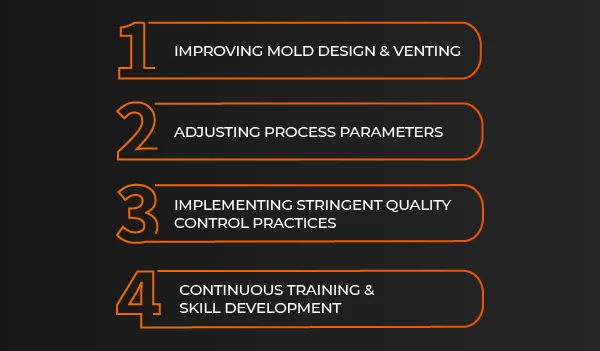
Identifying the common challenges in compression molding is only the first step; addressing and overcoming them is equally important. Here are some effective strategies to overcome these challenges:
A. Improving mold design and venting
Mold design plays a crucial role in ensuring even resin distribution, minimizing voids, and preventing flashing. Optimizing the mold design by adding venting systems in appropriate locations can facilitate the release of trapped air and improve resin flow. This leads to a more uniform distribution of material within the mold cavity, reducing the occurrence of common challenges.
B. Adjusting process parameters
Optimizing process parameters, such as temperature, pressure, filling speed, and curing time, is crucial to achieving consistent and high-quality compression molded products. Careful monitoring and controlling of these parameters based on material characteristics and mold design can significantly improve mold filling, resin distribution, and prevent overheating.
C. Implementing stringent quality control practices
Quality control should be an integral part of the compression molding process. Regular visual inspections, measuring critical dimensions, conducting material testing, and employing non-destructive testing methods can help identify any manufacturing defects and deviations from quality standards. Quality control practices should be implemented at each stage of the compression molding process to ensure consistent and reliable production outcomes.
D. Continuous training and skill development
Training and skill development of operators and technicians involved in the compression molding process are crucial to effectively overcome the common challenges. Educating the team about the specific challenges faced during compression molding, the proper use of equipment, understanding material behavior, and implementing best practices will contribute to improved product quality and overall process efficiency.
V. Conclusion
Compression molding is a versatile manufacturing process used in various industries. While it offers numerous benefits, there are common challenges that can hinder the production of high-quality molded products. By identifying and addressing these challenges through techniques such as improving mold design and venting, adjusting process parameters, implementing stringent quality control practices, and continuous training and skill development, manufacturers can overcome these obstacles and achieve consistent and reliable compression molding outcomes. Staying updated with the latest advancements and techniques in compression molding is vital to ensure the continuous improvement of production processes and the achievement of optimal product quality.
